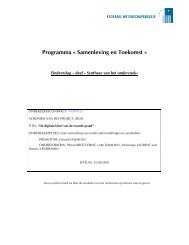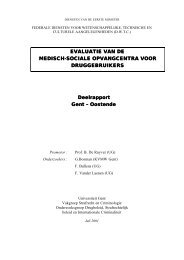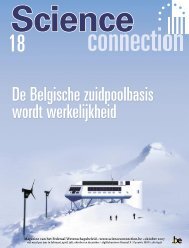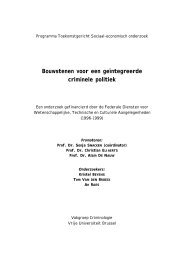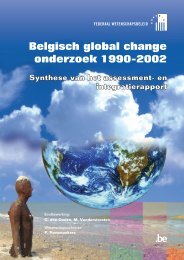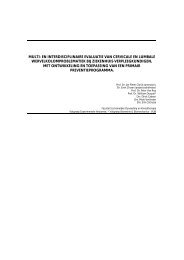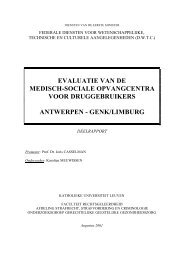chapter 3 inventory of local food systems
chapter 3 inventory of local food systems
chapter 3 inventory of local food systems
You also want an ePaper? Increase the reach of your titles
YUMPU automatically turns print PDFs into web optimized ePapers that Google loves.
Project CP/59 - “Instruments and institutions to develop <strong>local</strong> <strong>food</strong> <strong>systems</strong>”<br />
2.7. Conclusions<br />
We described and tested eight indicators that capture the economic, social and<br />
ecological impacts <strong>of</strong> different <strong>food</strong> <strong>systems</strong>. In general, it is very difficult to obtain the<br />
data that are needed for the calculation <strong>of</strong> these indicators. This is due to the small size<br />
<strong>of</strong> the <strong>local</strong> <strong>food</strong> system sector, but also the disaggregated nature <strong>of</strong> the required data<br />
what makes it very time consuming for respondents to retrieve such data.<br />
As the importance <strong>of</strong> LFS compared to MFS is small, one should be in search <strong>of</strong> a mean<br />
to introduce the benefits <strong>of</strong> the LFS in the MFS, without losing the values <strong>of</strong> the LFS. No<br />
point is made when both <strong>systems</strong> are only competing one another, while they are<br />
grounded in different philosophies, both with their sympathizers. The differences in<br />
LM3, product value in the consumer price and absolute price differences both to<br />
producer and consumer all point the conclusions in favour for the LFS, when results in<br />
relative values are taken into account. However, when one includes the market share <strong>of</strong><br />
both <strong>systems</strong>, the absolute conclusions on country level turn out differently. This<br />
grounds the following remark: the real challenge is not necessarily to be found in a way<br />
to turn the entire <strong>food</strong> market in LFS, but an even bigger challenge is to find the way to<br />
introduce the positive values and impacts <strong>of</strong> the LFS in the MFS and vice versa. A very<br />
important aspect in the latter is communication on product-properties, including<br />
producer, processor and price information.<br />
On a social level, the modalities <strong>of</strong> social networks may on the one hand influence the<br />
amount and the nature <strong>of</strong> appreciation a farmer gets. However, on the other hand the<br />
difference between long and short supply chain farmers is not necessarily reflected in<br />
their surrounding social networks where knowledge is exchanged, communities are<br />
built, problems are shared and farmers back up for one another. In this respect it is more<br />
important to support personal attitude from farmers towards any network, rather then<br />
exclusively support <strong>local</strong> networks.<br />
SPSD II - Part I - Sustainable production and consumption patterns - Agro-Food 58



